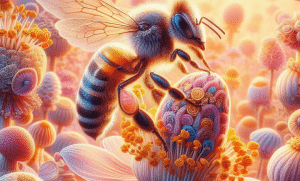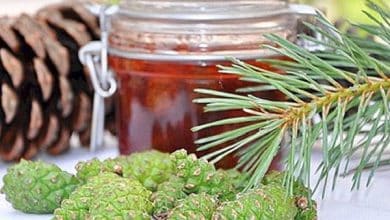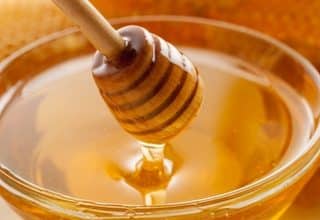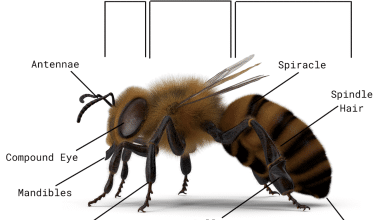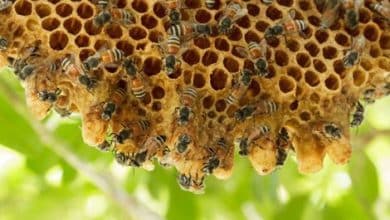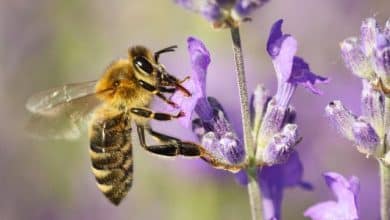Buzzworthy Blooms 10 Flowers That Bees Can’t Resist!

Bees play a crucial role in pollination, aiding in the reproduction of flowers and the production of many fruits and vegetables.
The Importance of Bees in Pollination
Bees play a crucial role in pollination, aiding in the reproduction of flowers and the production of many fruits and vegetables. They are master pollinators, moving from flower to flower and spreading pollen, which is vital for fruit and seed production. This process supports agricultural productivity and biodiversity, ensuring that both our diets and landscapes remain rich and varied.
Flowers that attract bees are not only beautiful additions to your garden but also contribute to the health of our ecosystem. By providing a food source for bees, these flowers help support their populations. This is particularly important because bee populations worldwide are facing decline due to factors such as habitat loss and pesticide use. Creating a bee-friendly garden by planting flowers that attract bees can help contribute to their preservation and ensure the continuation of their important role in pollination.
The Relationship Between Bees and Flowers
Bees and flowers have a symbiotic relationship that is vital for both their survival. Bees rely on flowers for nectar, which provides them with the energy they need to fly and produce honey. In return, bees transfer pollen from one flower to another, allowing plants to reproduce and produce fruit and seeds. This process, known as pollination, is essential for the growth and diversity of plant species.
Without bees, many plants would not be able to reproduce effectively, leading to a decline in biodiversity and food production. Flowers have evolved to attract bees through colorful petals, sweet scents, and patterns that guide bees towards their nectar. Bees are also able to detect ultraviolet light, allowing them to see patterns on flowers that are invisible to humans. Through their intricate relationship with flowers, bees play a crucial role in maintaining the health of ecosystems and providing us with the fruits, vegetables, and flowers we enjoy.
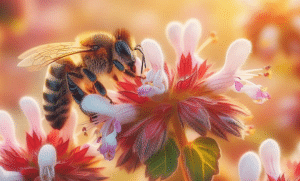
Sunflower
Sun flowers, with their iconic tall stature and radiant yellow petals, are a magnet for bees. Their broad faces and deep brown cores provide an abundant source of nectar, making them irresistible to our buzzing friends. Standing amidst a field of sun flowers is like being surrounded by a sumptuous feast for bees. These vibrant blooms not only attract bees but also enhance the beauty of any garden or landscape.
So, if you want to create a bee-friendly environment, consider planting some sun flowers. Their striking appearance and rich nectar make them a top choice for both bees and garden enthusiasts. Enjoy the sight of bees happily buzzing around your sun flowers while knowing that you’re contributing to their well-being and the health of our ecosystems.
Sunflower Characteristics and Attraction to Bees
Sun flowers have distinct characteristics that make them highly attractive to bees. With their broad semi-flat petals and abundant pollen, sun flowers provide an easy resting place and a rich source of food for bees. The vibrant yellow color of their petals also acts as a visual cue, guiding bees towards the nectar-filled center. Sun flowers are known to produce copious amounts of nectar, making them a favorite among bees.
Additionally, their tall stature allows bees to access the flowers easily, further increasing their appeal. By planting sun flowers in your garden or landscape, you can create a bee-friendly environment that supports their well-being and contributes to the pollination process. So, whether you’re an avid gardener or simply want to help protect our buzzing friends, consider adding sun flowers to your outdoor space and enjoy the sight of bees happily buzzing around these beautiful blooms.
Benefits of Sunflowers to Bee Population
Sun flowers play a crucial role in supporting bee populations. Their abundant pollen and accessible resting places make them highly attractive to bees. By planting sun flowers, you can provide bees with a rich source of food and contribute to their overall well-being. Sun flowers are particularly beneficial for native bees, who are important pollinators. These flowers not only provide a nutritious food source but also offer a safe place for bees to rest and gather energy.
Sun flowers can be grown easily in gardens or landscapes, making them a convenient choice for anyone looking to create a bee-friendly environment. By including sun flowers in your outdoor space, you are helping to support the bee population and ensure the continued pollination of plants. So, if you want to make a positive impact on bee populations, consider planting sun flowers and watch as these vibrant blooms attract buzzing visitors to your garden.
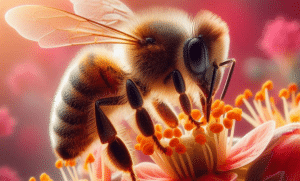
Lavender
Lavenders with their slender stalks and tiny purple blooms are rich in nectar, drawing bees like a siren song. Standing amidst a field of lavender, one can imagine the air filled with a calming aroma and the horizon painted in shades of purple. Lavenders’ vibrant colors and delightful fragrance make them highly attractive to bees, who are drawn to their abundant nectar.
These beautiful flowers provide a valuable food source for bees and contribute to their overall well-being. Additionally, lavender has medicinal properties and is known for its relaxing effects, making it beneficial for both humans and bees alike. By growing lavender in your garden, you can create an inviting space for bees to gather nectar and promote a healthy bee population. So, if you want to attract bees to your garden while enjoying the aesthetic appeal and therapeutic benefits of lavender, consider adding these beautiful blooms to your outdoor space.
Lavender’s Aesthetic Appeal to Bees
Lavender’s vibrant colors and delightful fragrance make them highly attractive to bees, who are drawn to their abundant nectar.
Medicinal and Relaxing Properties of Lavender
Lavender not only has aesthetic appeal to bees but also possesses medicinal and relaxing properties. Its soothing fragrance is often used in aromatherapy to promote relaxation and reduce stress. Lavender essential oil can also be applied topically to alleviate minor skin irritations, such as insect bites or burns.
Additionally, lavender is known for its antiseptic and antimicrobial properties, making it a valuable ingredient in natural remedies for various ailments. Whether enjoyed in the garden or used in various forms, lavender offers both visual delight and potential wellness benefits for humans and bees alike.
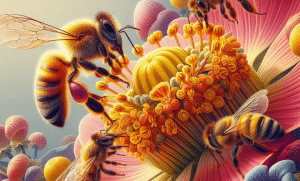
Rosemary
Rosemary, a culinary herb with slender needle-like leaves, surprises many with its delicate blue flowers that serve as a source of rich nectar for bees. Along with its aromatic and flavorful qualities, Rosemary offers an additional benefit by attracting and supporting bee populations. As the colder months approach, Asters, with their starry flowers in purples and pinks, bloom during late summer and autumn, providing sustenance for bees.
Mint, beloved for its refreshing scent, also has tiny white flowers that are often overlooked by gardeners but serve as a treasure trove of nectar for bees. Creating a bee-friendly garden involves incorporating these top 10 bee-friendly flowers, including Rosemary, Asters, and Mint. By prioritizing these plants in your garden, you can help support the essential work of bees in pollination while enjoying the beauty and benefits they bring to your outdoor space.
Rosemary Flowering Season and Bee Attraction
Rosemary blooms during certain times of the year, attracting bees with its delicate flowers. The flowering season for Rosemary typically occurs in late spring or early summer. Bees are drawn to the nectar-rich blossoms, which provide them with a valuable food source. The blue flowers of Rosemary are small but abundant, making them easily accessible to bees. By planting Rosemary in your garden, you can help support bee populations by providing them with a reliable source of nectar.
Additionally, Rosemary has many culinary and medicinal uses, making it a versatile and beneficial addition to any garden. Its aromatic leaves can be used to enhance the flavor of various dishes, while its essential oil is known for its soothing properties. So not only does Rosemary attract bees, but it also offers numerous benefits for human use as well.
Culinary and Medicinal Uses of Rosemary
Rosemary is not only a favorite herb in the kitchen, but it also has numerous medicinal uses. Its fragrant leaves are commonly used to enhance the flavor of various dishes, such as roasted meats and vegetables. Additionally, Rosemary is known for its medicinal properties, including its ability to improve digestion, boost memory and concentration, and relieve stress and anxiety.
The essential oil derived from Rosemary is often used in aromatherapy to promote relaxation and relieve muscle tension. This versatile herb can be brewed into a tea, infused into oils or vinegars, or used as a garnish for both culinary and medicinal purposes. Whether you’re looking to add flavor to your cooking or seek natural remedies for common ailments, Rosemary is a prized herb that offers both delicious taste and health benefits.
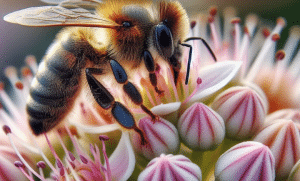
Bee Balm
Bee Balm, also known as Monarda, is a flower native to North America that bees absolutely love. Its brilliant red blooms attract not only bees but also butterflies and hummingbirds. To ensure a continuous supply of nectar for bees, it’s important to let the blooms of Bee Balm turn into seed heads. This allows the plant to self-sow and provide food for bees throughout the season.
Additionally, Bee Balm is a late-season flower, meaning it continues to bloom until late fall when other flowers may no longer be available. By growing Bee Balm in your garden, you can help sustain bee populations even during cooler months. Consider planting other late bloomers like ironweed, goldenrod, Joe Pye weed, rudbeckias, and helianthus to keep the bee party going all season long.
Bee Balm as a Native Pollinator Magnet
Bee Balm is a native pollinator magnet, attracting bees with its vibrant blooms and abundant nectar. Its bright colors and sweet fragrance make it irresistible to bees, who rely on the nectar for sustenance. By planting Bee Balm in your garden, you can create a haven for bees and support their population. To maximize its pollinator-attracting potential, plant Bee Balm in sunny areas with well-drained soil. Be sure to provide adequate spacing between plants to allow for air circulation.
Deadhead spent blooms to encourage continuous flowering and seed development, which will provide food for bees throughout the season. Additionally, Bee Balm is known to attract other beneficial insects like butterflies and hummingbirds, making it a valuable addition to any pollinator garden. Consider incorporating Bee Balm into your landscaping to not only beautify your outdoor space but also support the vital work of bees.
Growing Bee Balm in Your Garden
To grow Bee Balm in your garden, start by selecting a sunny area with well-drained soil. This native pollinator magnet thrives in full sun and can tolerate a variety of soil types. Prepare the soil by removing any weeds or rocks and loosening it with a garden fork. Plant Bee Balm seeds or transplants in early spring, spacing them about 12 to 18 inches apart. Water the plants regularly, keeping the soil consistently moist but not waterlogged. Deadhead spent blooms to encourage continuous flowering and seed development.
In colder regions, apply a layer of mulch around the plants to protect them during winter. Bee Balm is known for attracting bees, butterflies, and hummingbirds, so be sure to provide a welcoming habitat by including other pollinator-friendly plants nearby. Enjoy the beauty of Bee Balm while supporting the important work of pollinators in your garden.
The Top 10 Bee Friendly Flowers For Your Garden offer a vibrant and beneficial addition to any outdoor space. Bees play a crucial role in pollination, ensuring the reproduction of many plants. By planting flowers that attract bees, you can support these important pollinators while enjoying the beauty of your garden. Sunflowers are a popular choice, with their large, nectar-filled blooms.
Lavender is not only visually appealing to bees but also offers medicinal and relaxing properties. Rosemary’s flowering season aligns perfectly with bee activity, and it has culinary and medicinal uses as well. Bee Balm is a native pollinator magnet that thrives in sunny areas and attracts bees, butterflies, and hummingbirds. To grow Bee Balm, select a sunny spot with well-drained soil and plant seeds or transplants in early spring. Water regularly and deadhead spent blooms for continuous flowering.
Remember to provide other pollinator-friendly plants nearby to create a welcoming habitat for bees. With these top 10 bee friendly flowers, you can create a buzzworthy garden that supports pollinators and adds beauty to your outdoor space!
The Top 10 Flowers That Attract Bees
Sun flowers, with their vibrant and nectar-filled blooms, are one of the top choices for attracting bees to your garden. Their large size makes them easily visible to bees, and they provide a plentiful source of food.
Lavender is not only visually appealing to bees, but it also has medicinal and relaxing properties. Bees are drawn to its fragrant blooms and can benefit from the nectar it provides.
Rosemary’s flowering season aligns perfectly with bee activity, making it an excellent choice for attracting these pollinators. In addition to attracting bees, rosemary has culinary and medicinal uses that make it a valuable addition to any garden.
Bee Balm, also known as Monarda, is a native pollinator magnet that thrives in sunny areas. Its bright blooms attract not only bees but also butterflies and hummingbirds. Planting Bee Balm in your garden can create a vibrant and diverse habitat for pollinators.
Other flowers that bees find irresistible include sun flowers, cosmos, echinacea, borage, salvia, wild lilac, goldenrod, and black-eyed Susan. By including these flowers in your garden, you can create a buzzworthy space that supports pollinators while adding beauty to your outdoor environment.
Remember to provide other pollinator-friendly plants nearby to create a welcoming habitat for bees. With these top 10 bee-friendly flowers, you can create a garden that supports these important pollinators and adds vibrancy to your outdoor space!
Tips on Creating a Bee-Friendly Garden
To create a bee-friendly garden, there are a few tips to keep in mind. First, choose a variety of flowers that bloom at different times of the year to provide a continuous source of nectar for bees. Incorporate native plants, as they are well adapted to the local environment and attract native bee species. Avoid using pesticides and herbicides, as they can be harmful to bees. Instead, opt for natural pest control methods or companion planting.
Provide nesting sites for bees by leaving areas of bare soil or installing bee houses. Lastly, ensure there is a water source nearby, such as a shallow dish filled with water and pebbles for bees to safely drink from. By following these tips and creating a bee-friendly garden, you can support the health and population of these important pollinators while enjoying the beauty of your blooming flowers.
Do bees get nectar from flowers?
Bees do get nectar from flowers, as it serves as their main source of food. They have a specialized tongue called a proboscis that allows them to reach deep into flower blossoms to extract the nectar. Bees are attracted to flowers by the bright colors and sweet scents they produce. When a bee lands on a flower, it uses its proboscis to suck up the nectar from the base of the flower’s petals.
As it drinks the nectar, pollen sticks to the bee’s body, which is then transferred to other flowers, aiding in pollination. The amount of nectar a flower produces can vary, but certain flowers like sun flowers, lavender, and rosemary are known for their abundant nectar production. By planting these nectar-rich flowers in your garden, you can provide a valuable food source for bees and support their vital role in pollination.
What flower produces the most nectar for bees?
What flower produces the most nectar for bees? Sun flowers are known to produce a significant amount of nectar, making them highly attractive to bees. The large, vibrant flowers of sunflowers offer a plentiful supply of nectar for bees to feed on. Their bright yellow petals and central disc full of tiny florets make them easy for bees to land on and access the abundant nectar within.
Sun flowers can provide a rich food source for bees, supporting their pollination efforts and contributing to the health of bee populations. Planting sun flowers in your garden can not only create a stunning visual display but also play a vital role in supporting these important pollinators. So, if you want to attract bees and provide them with plenty of nectar, sun flowers are an excellent choice.
Does the bee know which flower has nectar?
Bees have a remarkable ability to detect which flowers contain nectar. Through their keen sense of smell and visual cues, bees can identify the scent and color patterns associated with nectar-producing flowers. This allows them to efficiently navigate and forage for the most rewarding sources of nectar.
Additionally, bees are known to communicate with each other through intricate dances and pheromones, sharing information about the location of nectar-rich flowers. By utilizing these sophisticated mechanisms, bees are able to maximize their foraging efficiency and ensure a steady supply of nectar for their colony. So, when it comes to finding flowers with nectar, bees possess a natural instinct and an incredible level of sophistication in their foraging behavior.
How to extract nectar from flowers?
To extract nectar from flowers, bees use their long tongue, known as a proboscis. The proboscis is inserted into the flower’s nectar-producing structures, such as the nectaries or spurs. Bees then suck up the liquid nectar through their proboscis and store it in a specialized digestive organ called the honey stomach. Once their honey stomach is full, bees return to the hive and regurgitate the nectar into cells where it will be transformed into honey.
During this process, enzymes are added to break down complex sugars into simpler forms. The honey is then dehydrated by fanning their wings to evaporate excess moisture, resulting in thick and sticky honey. Bees are efficient at extracting nectar from flowers and play a crucial role in pollination while collecting this valuable food source for themselves and their colony.
As we close the chapter on our journey through the world of bee-friendly florals, we invite you to take these insights and transform your garden into a haven for our essential pollinating friends. Remember, every flower counts, and the choices you make in your garden can have a positive impact on local bee populations.
We’ve explored a vibrant variety of blooms, from the smallest florets favored by petite bees to the grand blossoms that welcome bumblebees and carpenters. Now, we’d love to hear from you! Share your bee garden success stories, ask questions, or tell us about your favorite bee-attracting flowers in the comments below.
Buzzworthy Blooms is more than just a blog—it’s a community of dedicated gardeners and bee enthusiasts. So, let’s keep the conversation growing as we work together to create a world that buzzes with life, one flower at a time!



